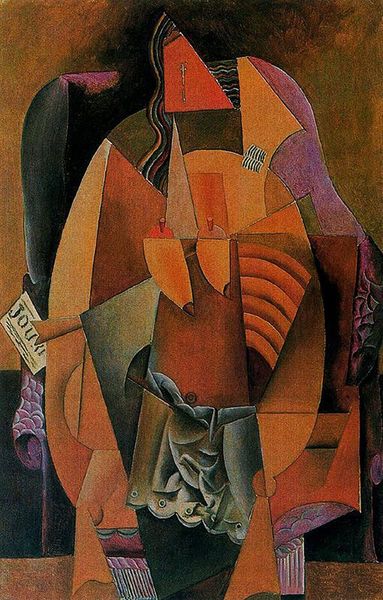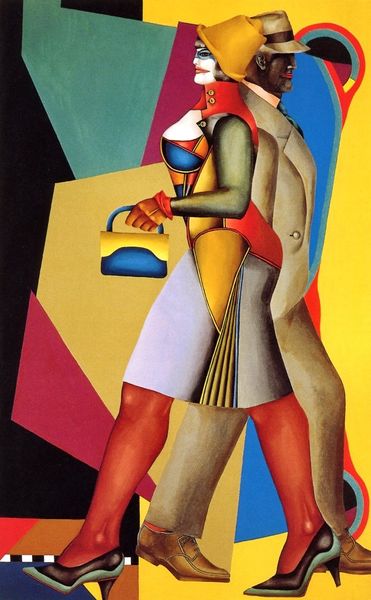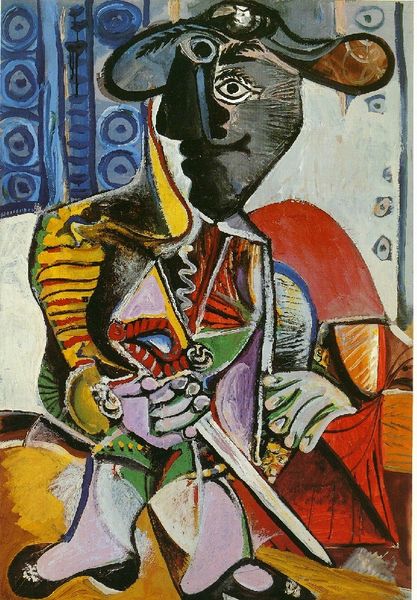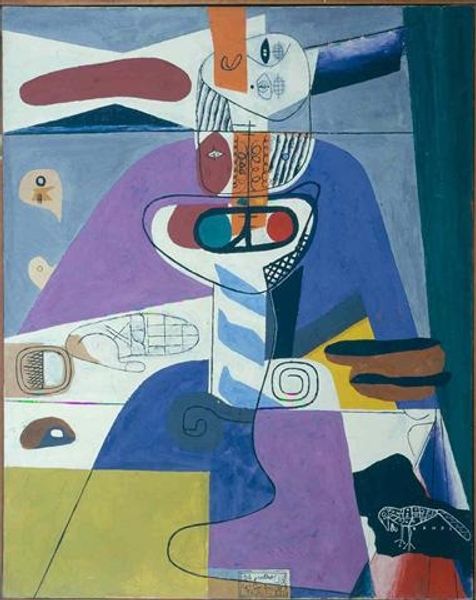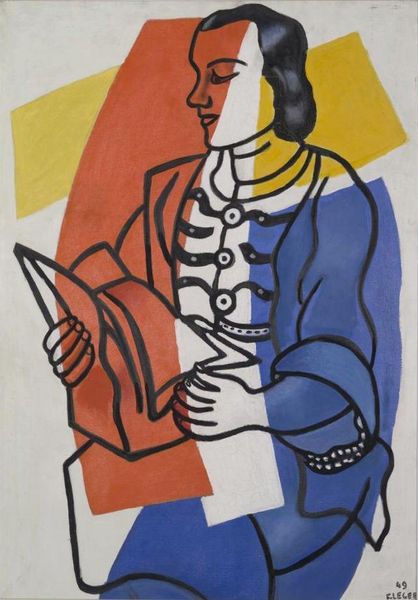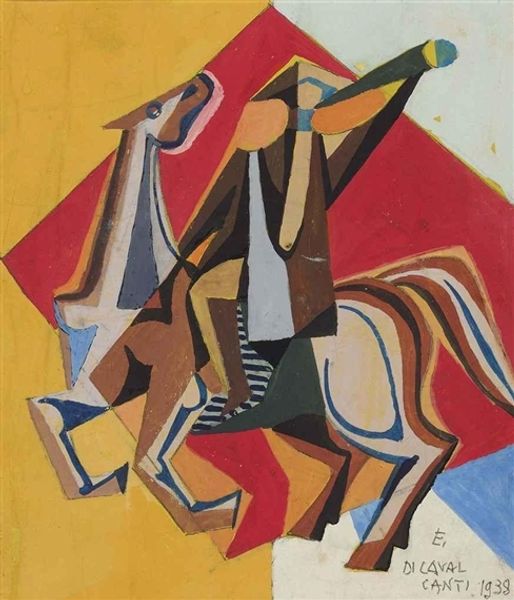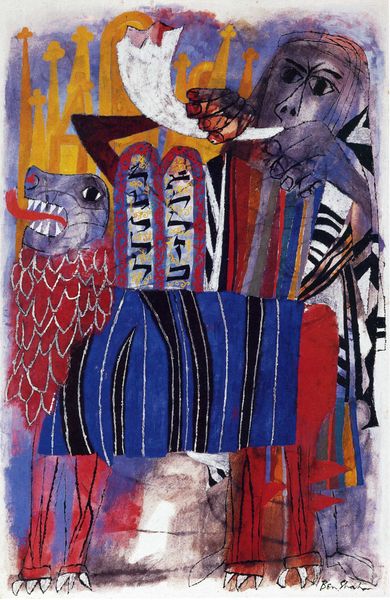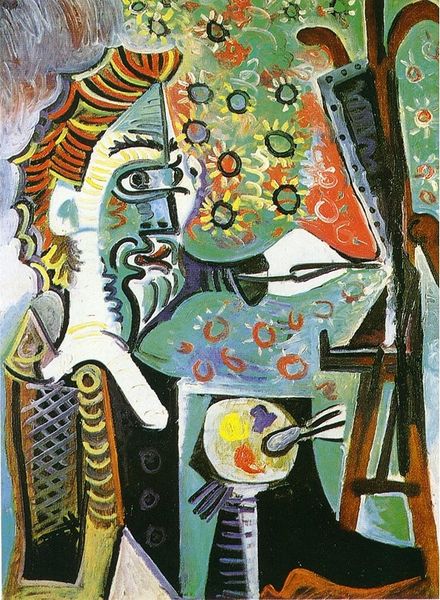
mixed-media, collage, painting, acrylic-paint, photography
#
portrait
#
mixed-media
#
collage
#
painting
#
graffiti art
#
pop art
#
acrylic-paint
#
figuration
#
photography
#
neo expressionist
#
acrylic on canvas
#
pop-art
#
modernism
Copyright: Richard Lindner,Fair Use
Curator: This striking piece is "Marilyn Was Here," by Richard Lindner. It’s a mixed-media work incorporating acrylic paint, collage elements, and photography. Editor: It grabs you, doesn’t it? The bold color blocking, the fractured figuration…there’s an immediate sense of…unease? Maybe fractured identity? Curator: Lindner was deeply affected by the rise of totalitarianism and consumer culture; that sense of fragmentation reflects the unease of modern life. He fled Nazi Germany. That had a massive impact on his understanding of the public role of art. Editor: I'm drawn to how he physically assembled this, too. The combination of painted surfaces, photographic scraps, and what look like found objects challenges notions of a singular, authoritative artistic gesture. I wonder where those came from? Curator: Exactly. He repurposes the iconography of American consumerism – the hints of the American flag for example– against this abstracted female form. It’s hard to separate Lindner's biography as a Jewish German émigré from how he approached art making, he critiques the spectacle and potential dehumanization he sees around him. Editor: The way he integrates text – "Marilyn Was Here," illuminated like a shop sign – points to a commodification of image, a very material concern of his practice. Think of all those other famous Marilyns of the time by Warhol, silkscreened by factory assistants! What about this? This looks like collage combined with precise hard-edged painting on canvas. It speaks of a lot of prep work, perhaps sketches or other preparatory media beforehand? Curator: And of course, that evokes Marilyn Monroe’s tragic fate; Lindner is addressing something about the role of celebrity, exploitation, and the price of fame. Editor: I’m struck by how this layering also relates to material loss – both the literal fragments of objects and photos here and how it evokes lost cultural heritage that he experienced firsthand in Germany, but here reflected through American consumer culture. Curator: Absolutely, it speaks volumes about displacement, commodification, and identity in the modern world. Editor: It does. It's quite revealing when you examine how he pieced together image, paint, text, and form here – makes you wonder where 'Marilyn' really was, and what traces remain.
Comments
No comments
Be the first to comment and join the conversation on the ultimate creative platform.

